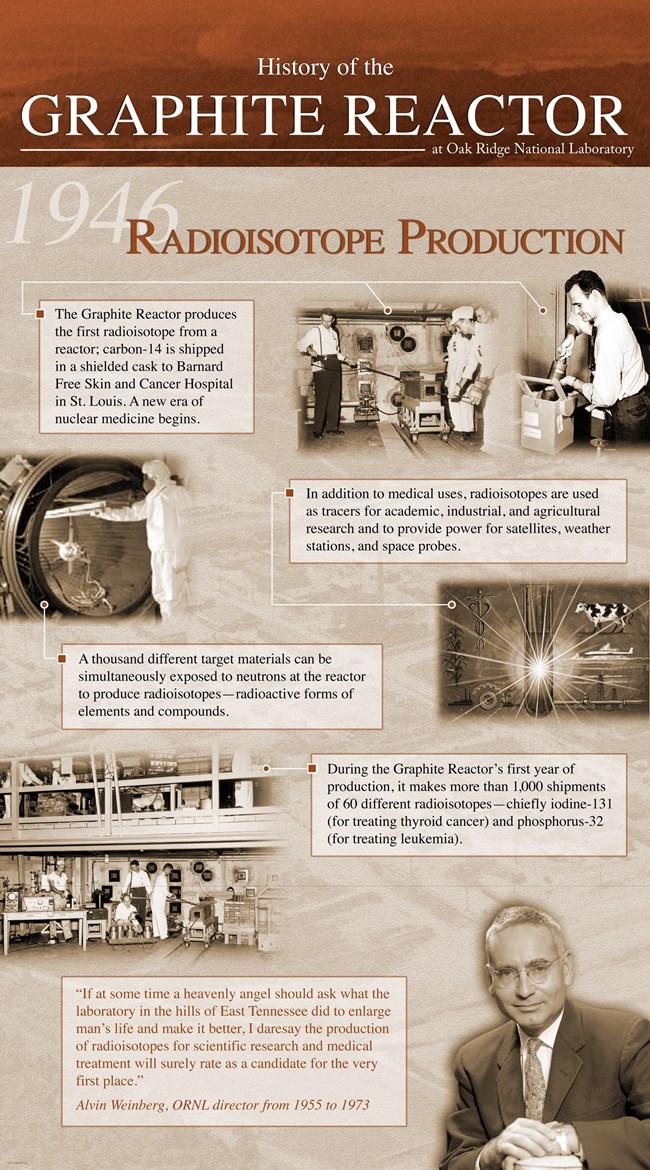Last updated: November 14, 2023
Article
Oak Ridge X-10: 1946- Radioisotope Production

US DEPARTMENT OF ENERGY
The X-10 Graphite Reactor is located on the secure grounds of Oak Ridge National Laboratory (ORNL). In-person visitation is only authorized via guided tours.
Text at the top of this panel reads,“The Graphite Reactor produces the first radioisotope from a reactor; carbon-14 is shipped in a shielded cask to Barnard Free Skin and Cancer Hospital in St. Louis. A new era of nuclear medicine begins.”
To the right is a photograph of several men in white coveralls manipulating a long rectangular shield on a rolling cart next to the experimental face of the reactor. Another man holds a long wand toward the cart while looking at an instrument hung over his shoulder. At far right a man places a cylinder in a thick-walled box with a handle.
Below the photograph text reads,“In addition to medical uses, radioisotopes are used as tracers for academic, industrial, and agricultural research and to provide power for satellites, weather stations, and space probes.”
Below the text is an image of a poster with a starburst in the middle and images of a cow, an airplane, a gear, and pipes. To the left text reads,“A thousand different target materials can be simultaneously exposed to neutrons at the reactor to produce radioisotopes – radioactive forms of elements and compounds. A photograph shows a man in a white body suits with hood and mask hanging a globe on a metal track through a large circular opening. Below more text reads,“During the Graphite Reactor’s first year of production, it makes more than 1,000 shipments of 60 different radioisotopes – chiefly iodine-131 (for treating thyroid cancer) and phosphorus-32 (for treating leukemia).”
The photograph shows several men near the reactor face in an experimental room with one man using tongs near a rectangular lead shield on a rolling cart.
Text at lower left on the panel has a quote from Alvin Weinberg, ORNL director from 1955 to 1973, which reads,“If at some time a heavenly angel should ask what the laboratory in the hills of East Tennessee did to enlarge man’s life and make it better, I daresay the production of radioisotopes for scientific research and medical treatment will surely rate as a candidate for the very first place.”
At lower right is a portrait of Weinberg with gray hair and wearing wire-rimmed glasses.
